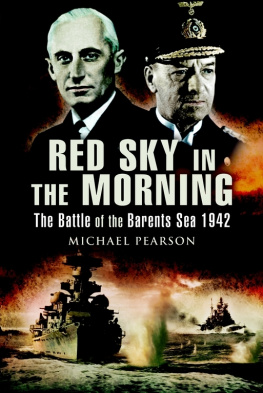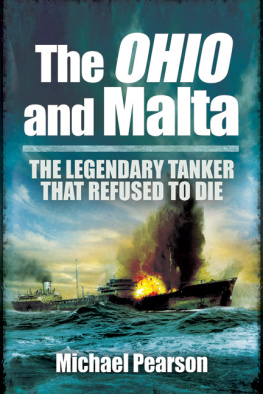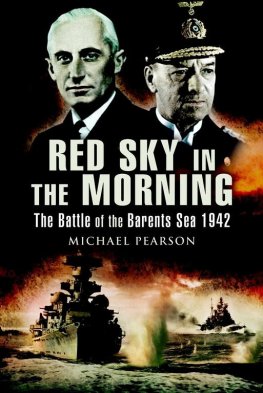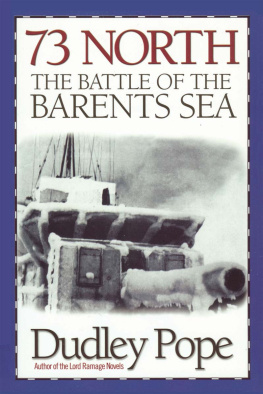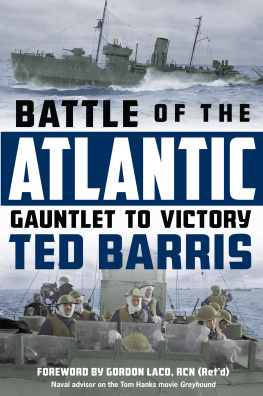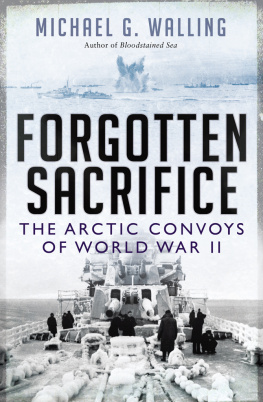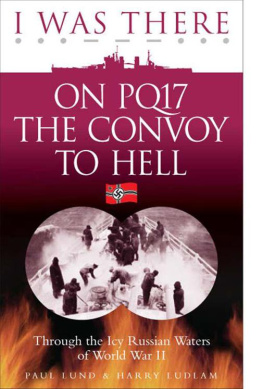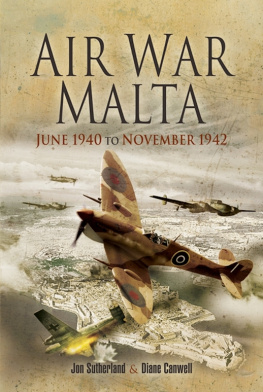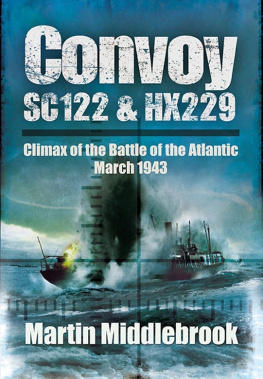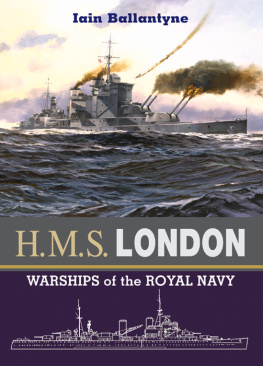ACKNOWLEDGEMENTS
I would like to extend my sincere thanks to the following persons and organisations without whom this book would not have been possible. I would particularly like to thank the veterans, British and German, who contributed their recollections and expertise with such unfailing enthusiasm and good humour.
Mr Smith Belford
Bundesarchiv, Koblenz (Researcher Dr Ekkehart Guth)
Lieutenant-Commander J.P. Donovan
Radio Mate and Guard Commander Johann Hengel
Captain Michael Hutton
Imperial War Museum, London
Mrs Pamela Marchant, for permission to use the taped interview with Lieutenant-Commander T.J. Marchant
Commander Loftus Peyton-Jones
Public Records Office, London
Mrs Helen Rhead, for permission to use the memoir of Lieutenant-Commander Eric Rhead
Control Telephone Officer for Heavy Artillery Josef Schmitz
Lieutenant-Commander A.W. Twiddy
Leading Stoker Walter Watkin
I would also like to express my appreciation to Mike Taylor, my good friend and fellow history buff, for his invaluable help in checking the drafts and proofs.
Mike Pearson
APPENDIX I
OUTLINE DETAILS OF GERMAN WARSHIPS WITH NOTES ON DEVELOPMENT AND WARTIME CAREERS
Heavy Cruiser Admiral Hipper
Vice-Admiral Oskar Kummetzs Flagship for the
Battle of the Barents Sea
Outline Specification
| Built: | Blohm & Voss Shipyard, Hamburg |
| Laid down 1935 |
| Completed 29 April, 1939 |
| Dimensions: | 639 ft 9 in (195 m) 69 ft 9 in (21.26 m) 15 ft 6 in (4.72 m) draught |
| Displacement: | Nominally 10,000 tons (10,160 tonnes), standard. Actual displacement closer to 14,900 tonnes |
| Main Armament: | 8 8 in (203 mm) in four twin turrets |
| Anti-aircraft Armament: | 12 4.1 in (104 mm) |
| 12 1.46 in (37 mm) |
| Also a number of 2 cm light a/a guns |
| Torpedo Tubes: | 12 21 in (533 mm) in four triple units situated on main deck, 2 abaft bridge, 2 abaft mainmast |
| Aircraft: | 4. Hangar placed between funnel and mainmast 1 catapult |
| Machinery: | 3 sets geared turbines (plus diesels for cruising), to 3 propeller shafts. High-pressure La Mont boilers Maximum 80,000 SHP, giving 32 knots |
| Mines: | Mine-laying capability, for which track was kept onboard |
| Complement: | 830 |
Admiral Hipper ( Reproduced with permission from Janes Information Group )
Pocket Battleship Ltzow (ex Deutschland )
Outline Specification
Ltzow ( Reproduced with permission from Janes Information Group )
| Built: | Deutsche Werke |
| Laid down 5 February 1929 |
| Completed 12 November 1934 |
| Dimensions: | 609 ft 3 in (185.7 m) 67 ft 6 in (20.57 m) 21 ft 8 in (6.63 m) draught |
| Displacement: | Nominally 10,000 tons (10,160 tonnes), but probably over 12,000 tons (12,192 tonnes) |
| Main Armament: | 6 11 in (279 mm) in two triple turrets |
| New Krupp model firing a 670 lb (304 kg) shell |
| Maximum range 30,000 yards (27,432 m) |
| Maximum elevation 45 |
| Secondary Armament: | 8 5.9 in (146 mm), in single turrets |
| Anti-aircraft Armament: | 6 4.1 in (104 mm) |
| 8 37 mm |
| 10 machine-guns |
| Torpedo Tubes: | 8 21 in (533 mm) in two quadruple units aft |
| Aircraft: | 2 (1 catapult) |
| Machinery: | 8 2 stroke double-acting diesels ( compressorless), geared to 2 propeller shafts |
| Maximum total 54,000 BHP |
| Maximum speed 26 knots |
| Maximum cruising range at 15 knots 20,000 nautical miles, or 10,000 nautical miles even at high speed |
| Complement: | 926 |
| Note: | Electrically welded hull used for the first time in a ship of this size |
Maasz class destroyer Friedrich Eckholdt
(sister vessels Richard Beitzen & Theodor Riedel)
Outline Specification
| Built: | Blohm & Voss, 1937 |
| Richard Beitzen Deutsche Werke, 1935 |
| Theodor Riedel Germania, 1936 |
| Dimensions: | 374 ft 0 in (114 m) 37 ft 0 in (11.28 m) 9 ft 3 in (2.82 m) |
| Displacement: | 1625 tons (1651 tonnes), standard |
| Main Armament: | 5 5 in (127 mm), in five single turrets |
| Anti-aircraft Armament: | 4 37 mm |
| 4 20 mm |
| Torpedo Tubes: | 8 21 in (533 mm) in two quadruple units |
| Anti-submarine Armament: | Depth charges |
| Machinery: | Geared turbines. High-pressure water tube boilers |
| Maximum 50,000 SHP, giving 36 knots |
| Complement: | 283 |
Type 1936A (Mob) Narvik class destroyers
Z29 , Z30 , Z31
| Built: | 1941/42 |
| Dimensions: | 410 ft 0 in (125 m) 39 ft 4 in (12 m) 9 ft 6 in (2.90 m) |
| Displacement: | 2603 tons (2645 tonnes) |
| Main Armament: | 5 5.9 in (146 mm), in one twin and three single turrets. Some (e.g. Z30 ) fitted with a lighter single turret forward to improve seagoing characteristics |
| Anti-aircraft Armament: | 4 37 mm |
| 4 20 mm |
| Torpedo Tubes: | 8 21 in (533 mm) in two quadruple units |
| Machinery: | Geared turbines. Designed 55,000 SHP giving 36 knots |
Articles 181 and 190 of the Treaty of Versailles severely limited post-First World War development of the German navy, a central provision restricting German battleships to a maximum 10,000 tons displacement, whereas the Washington Naval Agreement of 1922 restricted the size of battleships of the major naval powers (Britain, France, Italy, Japan and the United States) to 35,000 tons. As the time for replacing the older battleships Germany had been allowed to keep in 1918 approached, the problem greatly exercised the planners and architects of the German navy. The solution arrived at proved to be unique and in many ways revolutionary the aptly nicknamed pocket battleship. The basic premise was actually quite simple to build a vessel fast enough to outrun more heavily armed enemy battleships, yet with sufficiently powerful main armament to outgun enemy heavy cruisers which had a faster turn of speed.
The first of this new class of vessel, the Deutschland , caused quite a stir in naval circles (see outline specification). Her combination of range, speed, and firepower made an ideal commerce raider, and commerce raiding, it was decided, would be the main aim of the German navy in any future conflict with Great Britain. Two sister vessels followed the Deutschland , the Admiral Scheer , one of the most successful German surface raiders of the Second World War, and probably the most familiar of the three, Admiral Graf Spee .

